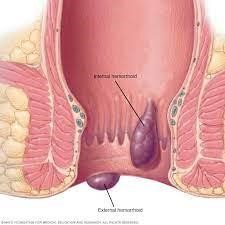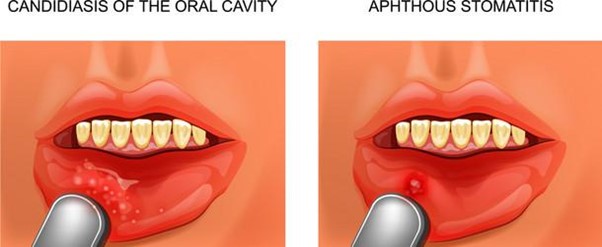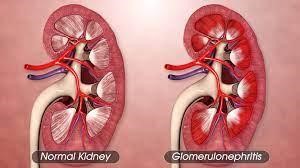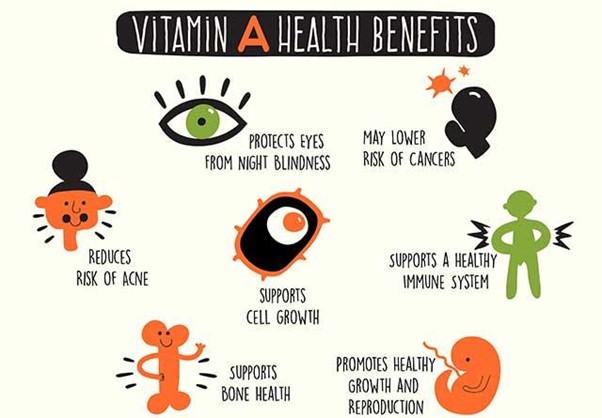RN HESI NUTRITION PROCTORED EXAM
RN HESI NUTRITION PROCTORED EXAM
Total Questions : 49
Showing 10 questions Sign up for moreThe nurse is preparing the client for discharge and discussing home medications. What home medications may affect the amount of insulin needed by the client? Select all that apply.
Explanation
Choice A rationale: St. John's Wort is an herbal supplement that can interact with various medications, including insulin, and may alter blood glucose levels. It can reduce the effectiveness of insulin, leading to decreased blood glucose control. It is essential for the client to inform the healthcare provider about any use of St. John's Wort to adjust the insulin regimen accordingly.
Choice B rationale: Corticosteroids can increase blood glucose levels by promoting insulin resistance and inhibiting insulin action. Clients with diabetes may require adjustments in their insulin dosage while taking corticosteroids to prevent hyperglycemia.
Choice Crationale: Ibuprofen is a nonsteroidal anti-inflammatory drug (NSAID) that does not typically have a direct impact on blood glucose levels in people with diabetes.
Choice D: Oral contraceptives, specifically combination hormonal contraceptives containing estrogen and progestin, can impact blood glucose levels. They may lead to insulin resistance and, in some cases, increase blood glucose levels. The healthcare provider may need to adjust the insulin dosage for better glycemic control.
Choice E rationale: Epinephrine is a hormone that may transiently increase blood glucose levels in response to stress, but it is not a home medication that the client would be taking regularly.
A female client with haemorrhoids tells the nurse that she understands the need to avoid eating nuts and seeds to prevent inflammation. How should the nurse respond?
Explanation
Choice A
Explain the benefits of a high fibre diet is not correct response. While a high fibre diet can indeed be beneficial for individuals with haemorrhoids by promoting regular bowel movements and reducing strain during defecation, the immediate concern here is addressing the client's understanding about avoiding nuts and seeds. This information could be provided as a follow-up after confirming the client's understanding in response to option B.
Choice B
Confirm that these foods should be avoided is the correct response. In this situation, the nurse's first response should be to confirm the client's understanding and provide accurate information about the need to avoid certain foods. Nuts and seeds can be challenging to digest and may lead to irritation and inflammation in individuals with haemorrhoids. Confirming the client's understanding and providing guidance aligns with the nurse's role in patient education and care.
Choice C
Encourage soft foods such as yogurt is not the correct response. Encouraging soft foods like yogurt is a reasonable suggestion for someone with haemorrhoids, as soft foods are generally easier to digest and less likely to cause irritation. However, the client's statement was specifically about avoiding nuts and seeds. While this choice might be relevant, it doesn't directly address the client's statement.
Choice D
Suggest that the client also avoid fruit skins is not the correct response. This option is not directly related to the client's concern about nuts and seeds. Fruit skins generally contain dietary fibre, which can be beneficial for maintaining regular bowel movements. While some individuals might find that certain fruits with tough skins could exacerbate their haemorrhoid symptoms, this advice might be better suited for a separate discussion about dietary choices rather than as a direct response to the client's statement.

The nurse is developing a food safety educational class for a group of parents. Which type of food is most likely to pose a threat of food poisoning after being stored in a refrigerator at 40°F (4.4°C) or below for more than two days?
Explanation
Choice A
Opened package of hot dogs is not correct. Hot dogs are processed and often contain preservatives that help extend their shelf life. However, it's still important to follow proper storage guidelines to ensure their safety.
Choice B
Packaged of uncooked lamb chops is not correct. Uncooked meats are generally safe if stored properly. The main concern arises when cooking and handling them, as raw meats can potentially cross-contaminate other foods if proper sanitation measures are not followed.
Choice C
Opened package of deli sliced meat is correct. Among the options provided, an opened package of deli sliced meats (option C) is most likely to pose a threat of food poisoning after being stored in a refrigerator at 40°F (4.4°C) or below for more than two days.
Deli sliced meats are considered a high-risk food for bacterial growth and foodborne illnesses. When meats are sliced and exposed to air, they have a larger surface area, making them more susceptible to bacterial contamination. While the refrigerator temperature of 40°F (4.4°C) helps slow down bacterial growth, it doesn't completely prevent it, especially if the food has been stored for an extended period of time.
Choice D
Ground-up hamburger raw meat is not correct. Similar to uncooked lamb chops, raw ground meat is generally safe when stored properly and handled with care. However, ground meats do have a larger surface area that can allow bacteria to grow more easily, which is why safe cooking practices are important.
A client who is receiving antineoplastic chemotherapy has lost 25% of total body weight and is having difficulty eating because of stomatitis. In planning care for this client which diet should the nurse recommend?
Explanation
Choice A
Low residue diet is incorrect. A low residue diet is typically recommended for individuals with gastrointestinal conditions like inflammatory bowel disease or diverticulitis. This diet limits high-fibre foods to reduce bowel movements and ease digestive stress. However, it might not be the best option for a client with stomatitis who is struggling to eat due to mouth pain.
Choice B
Mechanical soft diet is incorrect. A mechanical soft diet includes foods that are soft and easy to chew, but they aren't necessarily pureed. While this diet might be more comfortable to eat for some individuals, a client with severe stomatitis might still experience pain while chewing. A pureed diet is a step further in terms of texture modification and can be better tolerated by someone with significant mouth pain.
Choice C
Pureed regular diet is correct. Stomatitis is inflammation of the mouth and can cause pain and discomfort, making it difficult for the client to eat. In this case, a pureed regular diet would be the most suitable choice.
Choice D
High protein soft diet is incorrect. While a high protein diet is important for recovery, healing, and maintaining muscle mass, the texture of the diet is equally important for someone with stomatitis. A high protein soft diet might still involve foods that are challenging to eat due to mouth pain, and therefore, a pureed diet would be a better option in this case.

A client who haemorrhaged following surgery has a haemoglobin of 10 g/dl. (6.21 mmol/L) and a haematocrit of 36% (0.36 volume fraction) 48 hours later. The client has now progressed to a soft diet and is eating oatmeal for breakfast. Which beverage should the nurse encourage this client to drink to increase iron intake?
Reference Ranges
Haemoglobin (Hgb) [Reference Range: Male: 14 to 18 g/dL or 8.7 to 11.2 mmol/L]
Haematocrit (Hct) [Reference Range: Male: 42% to 52% or 0.42 to 0.52 volume fraction)
Explanation
Choice A
Coffee is incorrect. Coffee can inhibit iron absorption and is not a good choice for increasing iron intake.
Choice B
Hot tea is incorrect. Similar to coffee, some compounds in tea can interfere with iron absorption, making it less optimal for increasing iron intake.
Choice C
Orange juice is correct. Orange juice is a great choice as it is high in vitamin C, which can enhance the absorption of iron from plant-based sources like oatmeal. The vitamin C in orange juice helps convert non-heme iron into a form that is more easily absorbed by the body.
Choice D
Apple juice is incorrect. While apple juice is a source of fluids, it doesn't provide the same level of vitamin C as orange juice, which is important for enhancing iron absorption.

The nurse is caring for an older client with that is exhibiting signs of confusion. Which intervention should the nurse implement?
Explanation
Choice A
Offering water to the client hourly is not appropriate. While staying hydrated is important for overall health, offering water hourly might not be necessary unless there is a specific indication of dehydration. However, monitoring the client's fluid intake and output is a good approach.
Choice B
Reducing dairy product intake is not appropriate. Dairy product intake is not typically associated with sudden onset confusion. Reducing dairy product intake would not be the primary intervention for addressing confusion.
Choice C
Increasing daily sodium intake is not appropriate. Increasing sodium intake is unlikely to be the appropriate intervention for confusion unless there is a specific medical reason for it. Moreover, excessive sodium intake can have negative health consequences.
Choice D
Reviewing the intake and output record is appropriate. Confusion in an older client can be caused by various factors, including medical conditions, medication side effects, dehydration, and electrolyte imbalances. Reviewing the intake and output record (option D) is a reasonable intervention to gather more information about the client's fluid balance and hydration status. This can help the nurse assess whether the confusion might be related to dehydration or electrolyte imbalances.
Which client is at greatest risk for aspiration?
Explanation
Choice A
Client with a nasogastric tube to low, intermittent suction is not correct. While there is a risk of aspiration with a nasogastric tube in place, the tube is intended to help drain stomach contents, reducing the risk of aspiration. However, if the tube is not properly positioned or managed, there could still be some risk.
Choice B
Client who has sensory aphasia and is receiving a clear liquid diet is correct. Sensory aphasia refers to a language disorder that affects a person's ability to understand language and communication. This client may have difficulty swallowing safely and effectively, which increases the risk of aspiration. Additionally, a clear liquid diet consists of thin liquids that are more likely to be aspirated compared to thicker fluids.
Choice C
Client receiving 30% oxygen via a non-rebreather face mask is not correct. Oxygen therapy can increase the risk of drying the airways and potentially increasing the risk of aspiration, but if the oxygen mask is properly fitted and humidified, the risk may be minimized.
Choice D
Client experiencing dysphagia who is prescribed a full liquid diet is not correct. Dysphagia refers to difficulty swallowing, which can increase the risk of aspiration. However, a full liquid diet includes thicker liquids that are less likely to be aspirated compared to thin liquids. Still, the risk of aspiration exists, especially if the client has severe dysphagia.
A client who is training for a first marathon arrives at the clinic reporting an increase in the frequency of leg cramps. Which recommendation should the nurse provide to help decrease the frequency of leg cramps?
Explanation
Choice A
Drinking a litre of water during and after running is not appropriate: While hydration is important, consuming plain water might not be sufficient to address electrolyte imbalances that can contribute to leg cramps. Drinking excessive amounts of water without electrolyte replacement can even lead to a dilution of electrolyte levels.
Choice B
Consuming a sports drink before and during training is appropriate. Sports drinks are formulated to provide not only hydration but also electrolytes like sodium, potassium, and sometimes magnesium. These electrolytes are important for proper muscle function and can help prevent cramps. Consuming a sports drink before and during training can help maintain electrolyte balance and reduce the risk of leg cramps.
Choice C
Eating a high carbohydrate meal after running is not appropriate. Carbohydrates are important for refuelling muscles after exercise, but this recommendation doesn't directly address the issue of leg cramps during training. Electrolytes like sodium, potassium, and magnesium play a role in muscle function and can help prevent cramps.
Choice D
Avoid drinking alcohol forty-eight hours before training is not appropriate. While avoiding alcohol before training is generally a good idea for hydration and performance reasons, it doesn't specifically address the issue of leg cramps. Electrolyte balance is more directly related to muscle cramping.
A client with glomerulonephritis is preparing for discharge and asks the nurse which kind of diet to follow upon returning home. Which dietary teaching should the nurse include in the discharge instructions?
Explanation
Choice A
Following low carbohydrate diet with low glycaemic index foods is incorrect. This recommendation is not specifically related to the management of glomerulonephritis. While managing carbohydrate intake might be relevant for individuals with diabetes, it's not the primary focus for someone with kidney inflammation.
Choice B
Eating a high protein diet three times a day is incorrect: While protein is important for overall health and recovery, a high protein diet might not be the best recommendation for someone with compromised kidney function. Excessive protein intake could potentially put additional strain on the kidneys.
Choice C
Avoiding foods high in potassium is correct. Examples of foods high in potassium that the client should be cautious about include bananas, oranges, potatoes, tomatoes, spinach, and other fruits and vegetables. Glomerulonephritis is a condition involving inflammation of the glomeruli in the kidneys, which can affect kidney function and the regulation of electrolytes, including potassium. In glomerulonephritis, the kidneys might have difficulty filtering and excreting excess potassium, leading to a potential build-up of potassium in the blood (hyperkalaemia).
Choice D
Restricting sodium rich foods and excessive oral fluids is incorrect. This recommendation aligns more closely with managing fluid retention and blood pressure, which can be relevant for individuals with kidney issues. However, the primary concern in glomerulonephritis is often potassium balance, making the recommendation to avoid high potassium foods more pertinent.

A malnourished child is receiving several nutritional supplements. Which statement by the child indicates to the nurse that an adequate amount of Vitamin A is being provided?
Explanation
Choice A
"The bruises on my arms are all gone." This statement is incorrect. Bruising can be influenced by various factors, including platelet levels and clotting factors, but it is not a specific sign of Vitamin A deficiency.
Choice B
"My feet don't tingle like they used to. “This statement is incorrect. Tingling feet might be related to nerve function or circulation, but it is not a direct symptom of Vitamin A deficiency.
Choice C
"I can see at night when I wake up now. “This statement is correct. Vitamin A is essential for maintaining good vision, especially in low-light conditions. Deficiency of Vitamin A can lead to a condition called night blindness, where individuals have difficulty seeing in low light. Therefore, the statement "I can see at night when I wake up now" (option C) indicates that an adequate amount of Vitamin A is being provided.
Choice D
"My tummy seems so much smaller now. “This statement is incorrect. Changes in tummy size are not typically related to Vitamin A deficiency. Vitamin A deficiency is more closely associated with symptoms related to vision and immune function.

You just viewed 10 questions out of the 49 questions on the RN HESI NUTRITION PROCTORED EXAM Exam. Subscribe to our Premium Package to obtain access on all the questions and have unlimited access on all Exams. Subscribe Now



